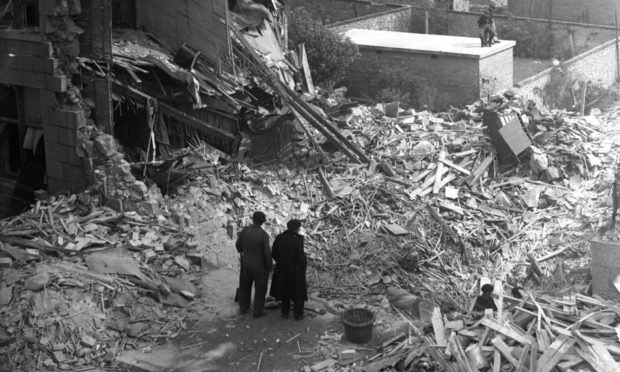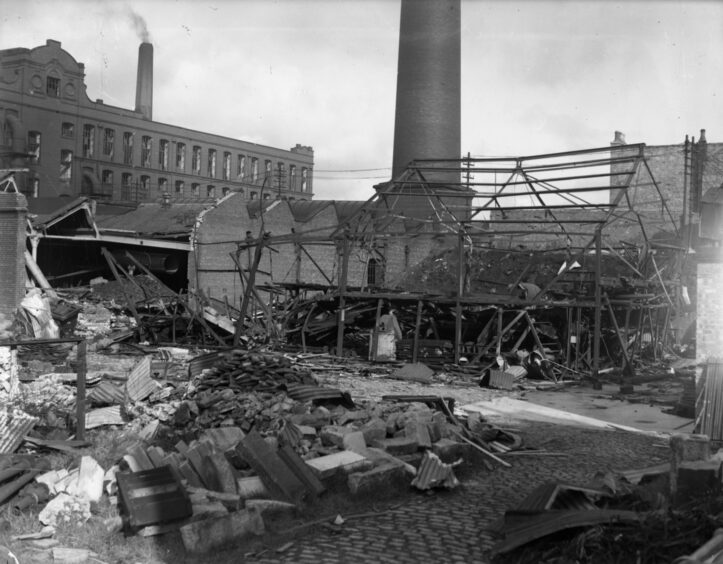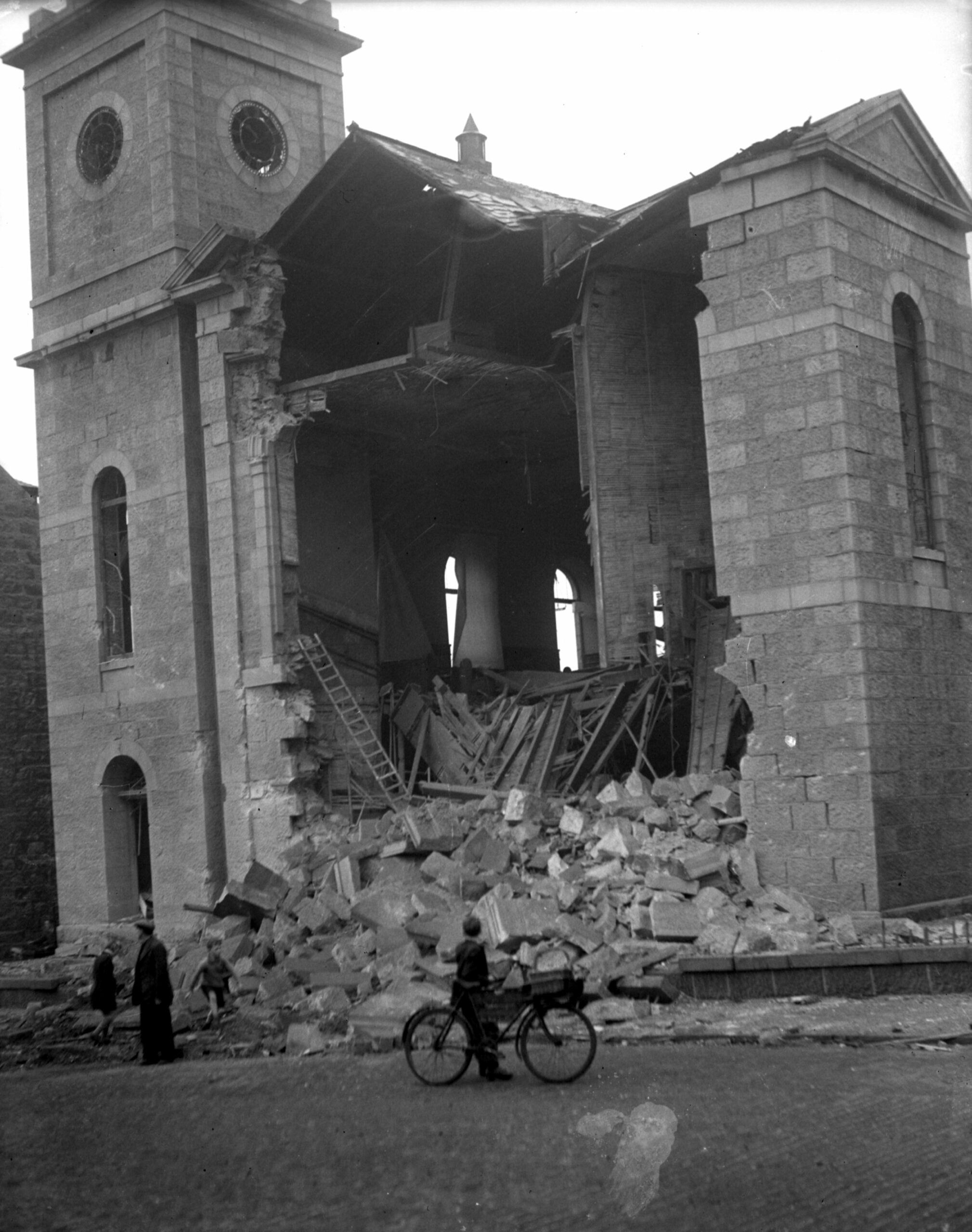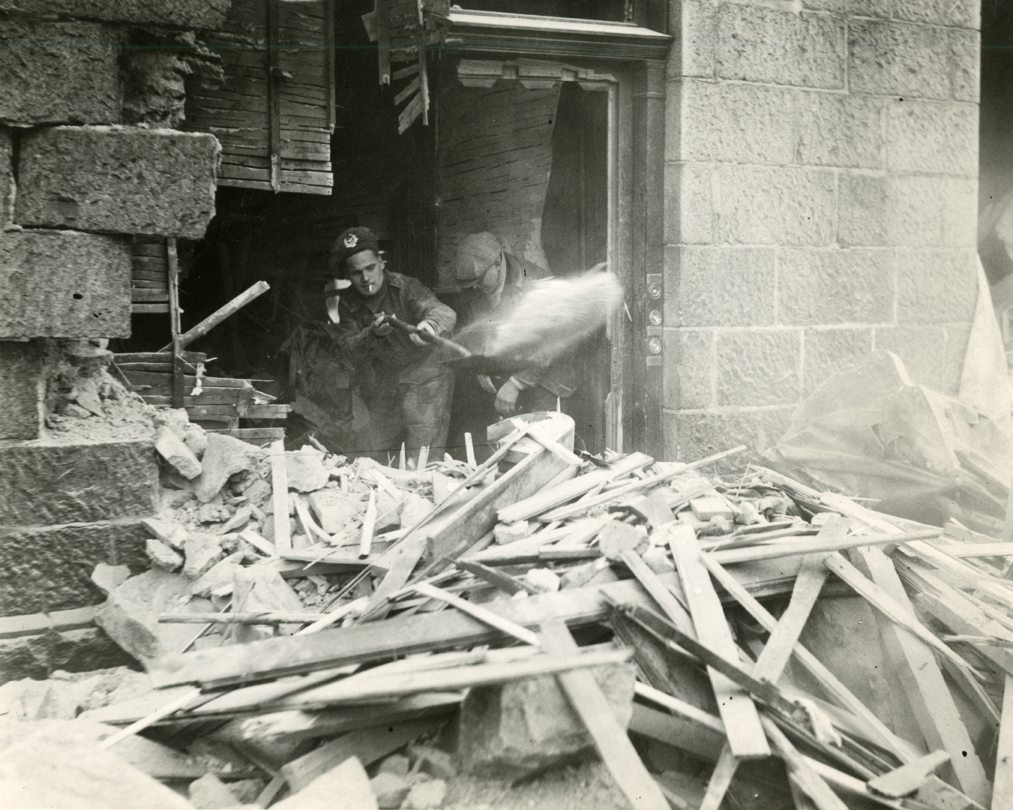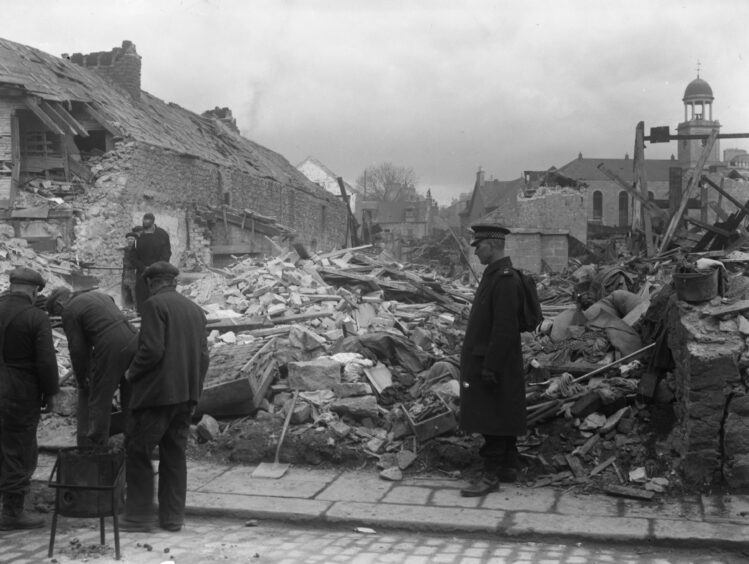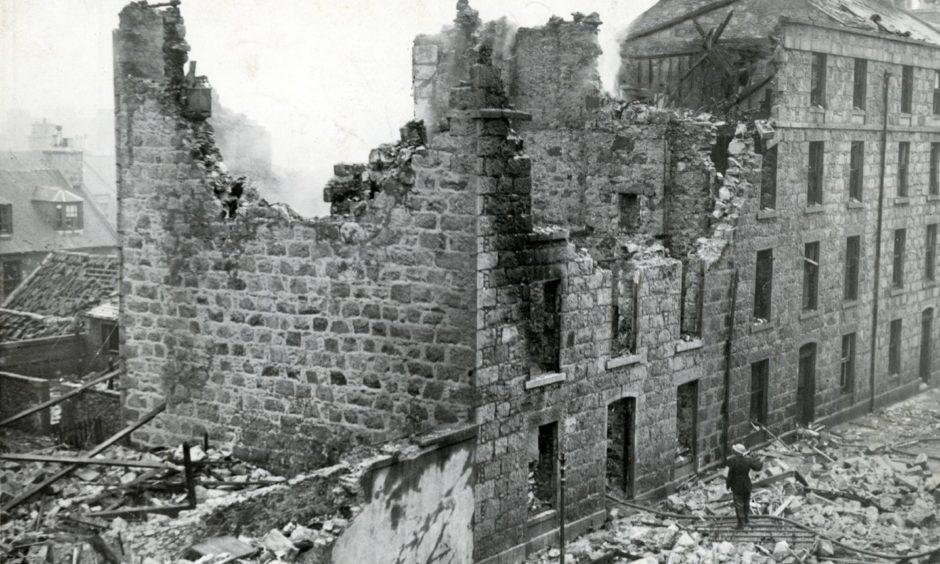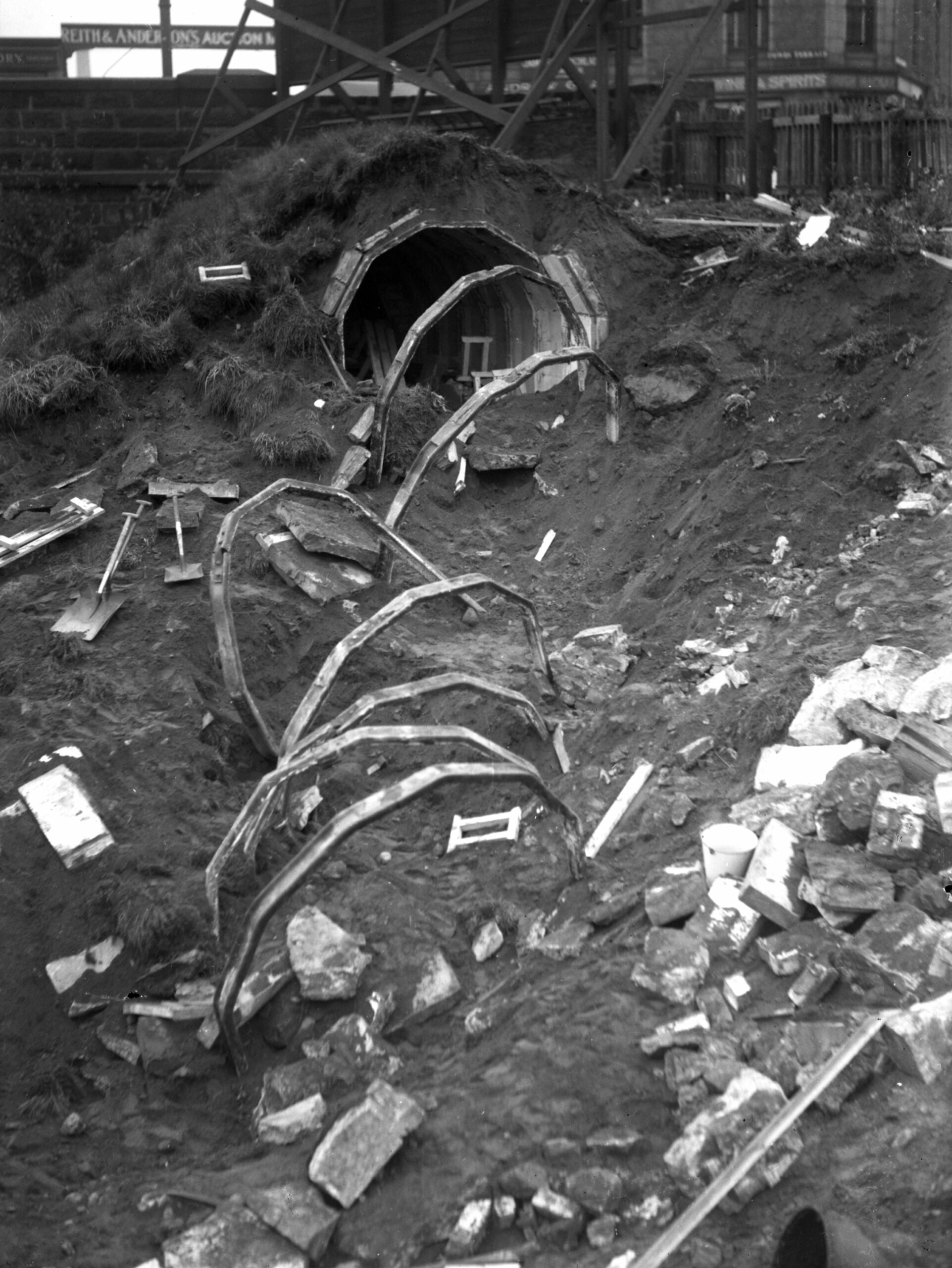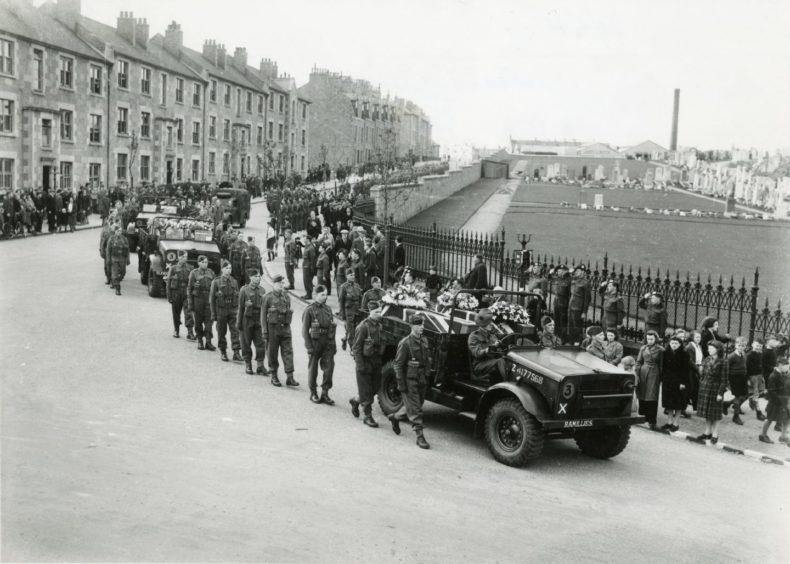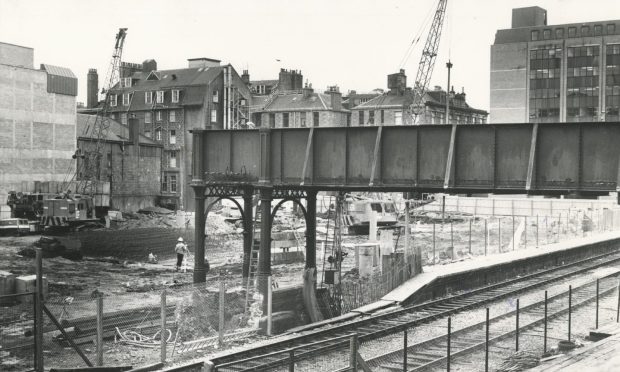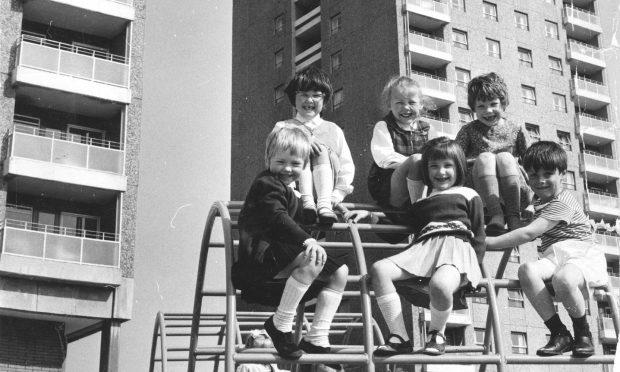The night of the Aberdeen Blitz wreaked a terrible price for all those who lost loved ones and had their homes destroyed.
And even now, almost 80 years later, the pictures testify to the devastation caused by the Luftwaffe as bombs rained down on April 21 1943.
In less than an hour, myriad housing blocks were reduced to rubble, Gordon Highlander troops found themselves in the middle of a vision from hell, and men, women and children were forced to seek safety in the shelters created to protect the public in a community that was nicknamed “Siren City”.
The enemy aircraft killed more than 120 soldiers and civilians as explosions proliferated throughout the night during the worst incident of the conflict for people in the north-east.
In just 44 minutes, 127 bombs fell, damaging or destroying more than 12,000 homes, killing 98 civilians and 27 soldiers, and wiping out a family of four, including two young children and a baby.
It started out as a calm April evening and nobody could have predicted how the peace would be shattered in such an apocalyptic manner.
But suddenly there was the ominous sound of a rhythmic drone as a group of 10 Luftwaffe Dornier bombers approached their target.
This was mass murder of civilians
Swooping as low as 100ft over Aberdeen, they flocked to the north-east like deadly birds of prey and were followed by another 15 shortly afterwards.
It was as well-organised as you might have expected from an air force which had already laid waste to countries across Europe and the planes flew in diminishing circles, dropping bombs with seemingly indiscriminate regard.
While the harbour and shipyard had been heavily attacked in previous air attacks after the outbreak of the Second World War, the object of this foray was to terrorise the citizens and inflict maximum civilian casualties.
Hilton was one of the first Aberdeen regions to face the onslaught, with a direct strike to Middlefield School, where a young teacher was trapped by a falling beam – and her leg subsequently had to be amputated.
‘It was something I’ll never forget’
Around 19 bombs tore through the estate and surrounding area, killing whole families in Cattofield Gardens and Bedford Road after their homes crumbled on top of them as smoke and screams filled the air.
The front of Causewayend Church on Powis Place was reduced to rubble, leaving a gaping hole, and a large headstone from St Peter’s Cemetery on The Spital crashed into the bedroom of a neighbouring property after it was propelled through the air by a stick bomb.
John Alexander, one of the young residents in Powis Place, told the Evening Express in 2008: “It all happened so quickly.
“One moment, everything was normal. Then people were being killed all around us. I’ll never forget it.”
On the Kittybrewster railway, a missile landed close to a shelter where 13 railwaymen were taking refuge and four of the group were killed.
The northern part of George Street was set alight and nearly every plate-glass window was blown out.
A nearby school – which later became the site for Aberdeen Technical College – was targeted, next to a night nursery where about a dozen children and three nurses mercifully escaped with cuts.
Around Hutcheon Street, Broadford Works was severely damaged and the Kilgour and Watson hosiery factory was destroyed by fire.
A phosphorus bomb fell through the roof of the Northern Co-operative Society’s grocery store at Berryden as the offensive continued to cause extensive damage.
The Evening Express front page on April 22 was actually about the bombing, but due to regulations introduced by the authorities to preserve morale, the newspaper was unable to mention the city by name in its coverage.
Yet, if that censorship obscured the consequences of the attack, nobody on the ground had any doubt about the severity of what had transpired.
Soldier’s tragic fate is still remembered
Walter Wren was serving with the Gordon Highlanders in Aberdeen when he was caught up in the Germans’ mass bombing raid.
Lance Corporal Wren, born in Gateshead in 1904, was one of the 27 soldiers based at the Gordon Barracks who perished during the raid.
His great-granddaughter Heather Williquette spoke to the Press & Journal and revealed more about her predecessor’s tragic story.
She said: “Walter and my grandfather Joseph both served in the war and, although Joseph came home afterwards, Walter remained in Aberdeen.
“According to his death certificate, he was found the next morning (on April 22) in Charlotte Street School, aged 39.
“The list of the soldiers who fell records he was in the 30th Battalion of the Gordon Highlanders, but it has been difficult finding out much information.”
The terse notification of his death was typical of that dreadful time in history. It comprised one sheet of paper, with the formal acknowledgment that he had been “killed by enemy action”.
This was followed by the message: “I am to express the sympathy and regret of the Army Council at the death of the soldier in his Country’s service.”
The letter, which was dispatched to his mother at 51 Taylor Terrace in Gateshead, was one of tens of thousands issued between 1939 and 1945.
Another family suffered appalling loss
The raid had particularly grim consequences for those in the Bedford Road area, which was obliterated in a few minutes.
And it was the catalyst for one of the worst civilian outrages in the Granite City when the Cox family, comprising mother Williamina, aged 22, and her three children, Freda, three, Frederick, 17 months and John, five months, were all killed at their home at 60 Bedford Place on April 21.
Their fate was only confirmed the following morning when search parties and officials discovered that many houses had been reduced to a grievous pile of rubble and ash, with no sign of those who lived there.
Despite the devastation, there were tales of heroism, stoicism and miraculous escapes.
One Bedford Road resident, Albert Adams, told how he dashed through machine gun fire with his two young children to reach safety.
He said: “The bullets were flying furiously. I crawled into the ash house on my way to the shelter for protection, but when I looked up, there was no roof.
“It was no place for us, and we made a dash to the shelter and safety.”
It was only once the dust has settled that the scale of the death toll became obvious. Aberdeen was a very sombre place in the weeks ahead.
There’s one particularly poignant photograph that shows the cortege of army vehicles taking some of the blitz victims from Bedford Road and Cattofield down Seaforth Road to the Trinity Cemetery on May 2 1943.
As they slowly advanced, their heads bowed, hundreds of Aberdonians lined the streets in silent tribute to the 98 civilian fatalities, many of whom were killed in their own homes in one of the darkest nights in the city’s history.
And many said a prayer that they had been spared. Because there really was a completely random element to whether people lived or died.
Interactive map shows details of every bomb that hit Aberdeen in World War II
More like this:
The blitz spirit behind the stay-at-home-holidays of wartime Aberdeen
